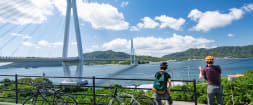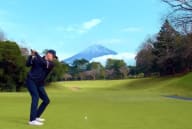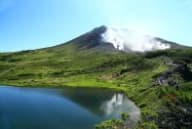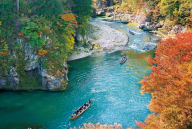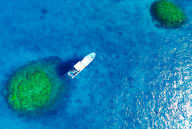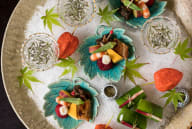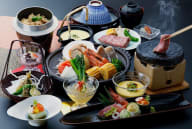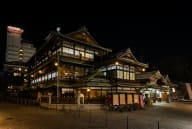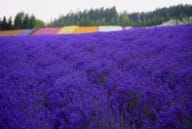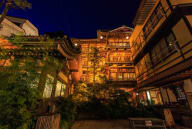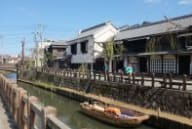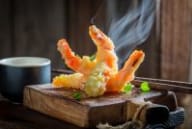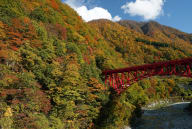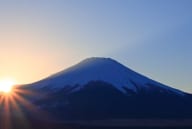
2025.7 Sushi: Definitive Seasonal Calendar Surrounded by bountiful seas, the Japanese archipelago offers a rich variety of seafood.
Sushi has become a global culinary phenomenon in the 21st century, with creative adaptations like California rolls and spicy tuna rolls delighting palates from Los Angeles to London. Yet, for the most authentic and freshest sushi, Japan remains unparalleled. Surrounded by bountiful seas, the Japanese archipelago offers a rich variety of seafood—from the northern reaches of Hokkaido to the southern coasts of Kyushu.

In Japan, sushi is much more than just a food—it’s a cultural experience that reflects the country’s seasons and regions. Even the same sushi topping can have different flavors depending on when and where it’s prepared. Some seafood is at its peak only during a brief window each year, meaning that every season offers a unique culinary experience. By exploring local specialties as you travel and letting the rhythms of nature guide your choices, you’ll discover the true essence of Japan’s sushi culture.
Savor different seasonal and regional flavors with every bite by keeping this handy sushi calendar nearby wherever your journey takes you!
Autumn and Winter in Northern Japan: Hokkaido’s Delicacies

At the northernmost tip of Japan, Hokkaido with its bountiful seafood is at the pinnacle of sushi craftsmanship. Here, the cold seasons are not a challenge but rather an opportunity to savor the ocean’s richest flavors.

Famous for its exceptional sushi, Hokkaido produces seafood that reaches its peak as the water temperature drops. In the town of Rausu on the World Heritage Shiretoko Peninsula, autumn salmon is prized for its roe of extraordinary richness and depth. Meanwhile, the sought-after Ezo-bafun sea urchin, known for its vibrant golden hue and creamy texture, is harvested at different places and times and locations as its seasonal peak gradually moves up the island’s eastern coast from November to January.

Hokkaido’s scallops, often hailed as the gold standard for sashimi, stand out for their light, creamy flavor and velvety texture, which is perfected by the icy northern seas. Winter also brings the peak of amaebi (sweet shrimp), its flavor deepening with the season’s chill, making it a true delicacy of the cold waters.
In Hokkaido, the autumn and winter chill is not endured—it is celebrated with every exquisite bite of the island’s unparalleled sushi.
Spring in the Hokuriku Region: The Bounties of Toyama Bay

When spring arrives in Toyama Bay, so does its delicious regional delicacy—the soft and chewy hotaruika (firefly squid), which draws sushi buffs to the area from March to June. These tiny squid are carefully harvested using traditional methods, often by boat at night. As fishers gently gather them, their bioluminescence illuminates the dark waters in an enchanting spectacle of light.

Spring in the region also brings shiroebi (white shrimp), dubbed “the jewel of Toyama Bay” for its translucent, ethereal pink glow. As the only place in Japan with fishing methods advanced enough to bring in a large catch of this shrimp, Toyama Bay is well worth a visit to experience the unmatched freshness and quality of this delicacy.

Adding to this seasonal abundance, masu salmon (cherry trout/salmon) migrates to Toyama Bay just as the cherry trees begin to bloom, bringing a delicate sweetness and rich umami that is perfect for masu-zushi. In this pressed-sushi meal, a thin, vinegared layer of masu on top of vinegared rice is wrapped in bamboo leaves, creating a taste that captures the essence of the cherry-blossom season.
Spring in Toyama Bay is a celebration of the delectable jewels of the sea, each one offering a unique taste of the region’s vibrant bounty.
Spring and Summer in Kyushu: Kagoshima Bay

The southern Japanese island of Kyushu is home to another sushi hot spot—Kagoshima Bay in Kagoshima Prefecture. Here, as in Toyama, spring brings a wide array of regional specialties, starting with katsuo (bonito). Known for its rich, meaty flavor, this fish is a beloved sushi choice, appreciated throughout Japan for its deep umami.

Another spring delicacy is sakura-dai (cherry sea bream), a mildly sweet white fish with a light, clean taste, and firm texture. Perfect for those who prefer a subtle, nonoily flavor, this fish makes an excellent nigiri topping.

Spring and summer in Kagoshima Bay offer a harmonious blend of local specialties that perfectly capture the region’s vibrant seafood culture.
Seasonal Sushi Calendar
Hokkaido
October to February
- Salmon Roe (ikura)
- Sea Urchin (uni)
- Scallops (hotate)
- Sweet Shrimp (amaebi)
Toyama Bay
March to April
- Firefly Squid (hotaruika)
- White Shrimp (shiroebi)
- Cherry Trout/Salmon (masu)
Kagoshima Bay
March to August
- Bonito (katsuo)
- Cherry Sea Bream (sakura-dai)
- Local Octopus (jidako)
- Sea Bass (suzuki)
When traveling in Japan, be sure to check the Seasonal Sushi Calendar for regional specialties that are at their peak during your visit. Each area offers a unique set of flavors, and aligning your culinary journey with the seasons will ensure that you experience the freshest, most authentic sushi in the country. Whether it’s the winter treasures of Hokkaido, the spring delights of Toyama Bay, or the vibrant flavors of Kagoshima Bay, there's extraordinary sushi to be found in every season!
For more information
Sushi in Japan Guide |
Sushi Masterclass |
|
https://www.japan.travel/en/gastronomy/article-the-sushi-master-class/ |
For more information on local food
Official Hokkaido Tourism Site |
Official Toyama City Travel Guide |
Official Kagoshima Travel Guide |














